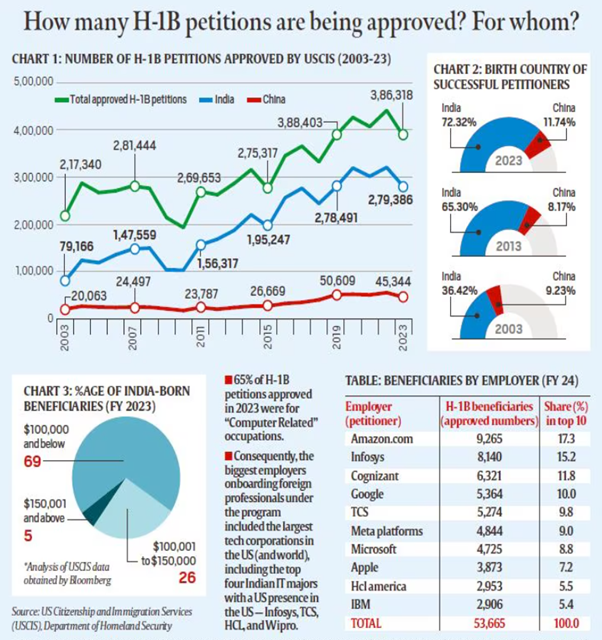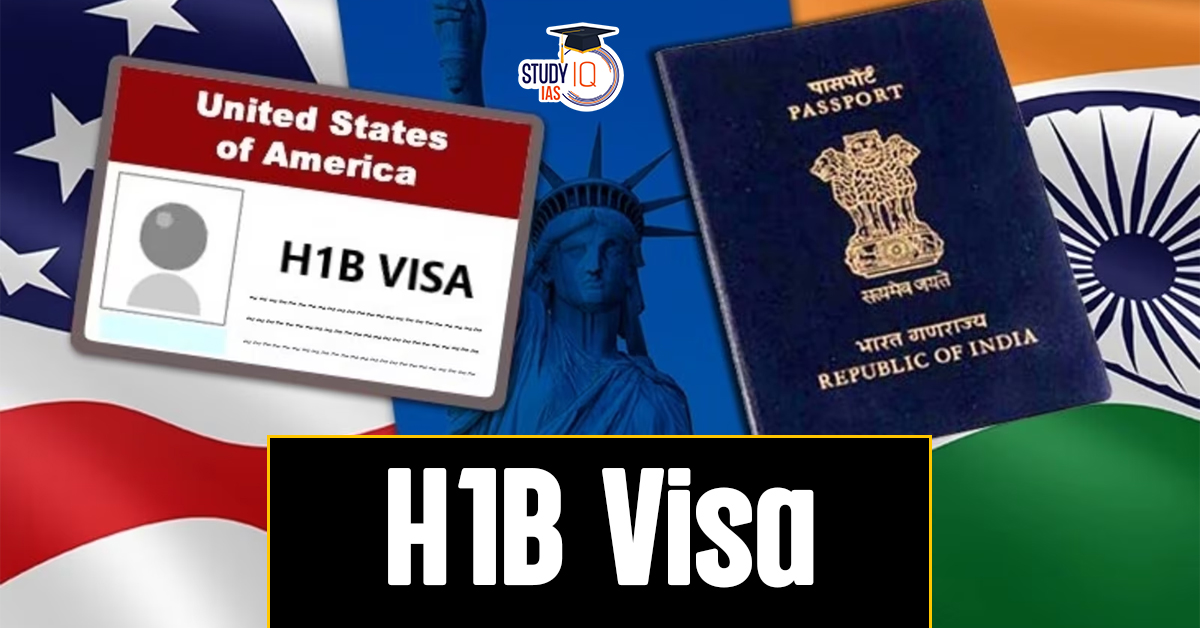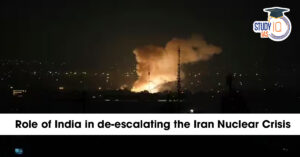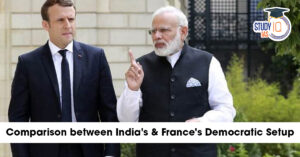Table of Contents
US President Donald Trump has once again shaken up the immigration landscape with a historic decision that could change the future of foreign workers in America. On September 20, 2025, Trump signed a proclamation imposing a $100,000 (over ₹88 lakh) fee on H-1B visa applicants.
This unprecedented move is being positioned by the Trump administration as a way to ensure that only the “most skilled professionals” enter the United States. However, for Indian workers — who make up the majority of H-1B visa holders — the impact could be devastating.
In this article, we break down the H-1B visa fee hike, its impact on Indians, the new Gold Card program, and what these changes mean for the future of skilled migration.
Trump Slaps $100,000 Fee On H-1B Visas
US President Donald Trump has announced a massive change in America’s immigration policy by imposing a $100,000 (₹88 lakh+) fee on H-1B visa applicants. The proclamation, signed on September 20, 2025, is being justified as a measure to ensure that only the “most highly skilled professionals” enter the US workforce.
The H-1B visa, introduced in 1990, allows American companies to hire foreign professionals in specialized fields like IT, engineering, and medicine. India has been the biggest beneficiary, with nearly 71% of all H-1B approvals going to Indian nationals. Tech giants such as Amazon, Microsoft, and Meta rely heavily on Indian talent, securing thousands of visas each year.
However, the new $100,000 fee will make it extremely difficult for Indian professionals, especially those stuck in the Green Card backlog, as they must renew visas every few years. Families may face severe financial strain, while US companies could struggle with a talent shortage.
Alongside this, Trump has introduced a “Gold Card Visa” program costing $1 million for individuals and $2 million for businesses, favoring wealthy migrants.
For Indians, the American Dream may now be out of reach, pushing skilled workers toward countries like Canada, UK, and Australia.
Key Impacts on Indians:
-
Unbearable Cost of Renewal
-
Since H-1B visas are temporary, workers often need to renew every 3 years.
-
Each renewal would now cost ₹88 lakh+, making long-term residency unaffordable.
-
-
Green Card Backlog
-
Indians face decades-long wait times for US Green Cards.
-
They will be forced to repeatedly renew H-1Bs at exorbitant fees.
-
-
Job Market Shifts
-
US companies may cut down hiring Indians, given the massive sponsorship costs.
-
Outsourcing to cheaper destinations or hiring Americans may become preferable.
-
-
Impact on Families
-
Many middle-class Indians aspiring for US jobs may find the dream financially impossible.
-
Families already in the US could face financial strain and job insecurity.
-
About H1B visa
- It is a Visa in the United States that allows the US employers to employ high skilled foreign workers in specialised occupations.
- It was established in 1990 to help employers address skill shortages that the domestic workforce cannot fill.
Specialised Occupation
It refers to a job that requires a specific set of specialised skills and educational qualifications.
- Educational Requirement: At least a Bachelor’s degree or higher in a specific field of study.
- Specialised Knowledge: Expertise in a particular field like- IT specialists, engineers, scientists, healthcare professionals etc.
Eligibility and Limits
- Valid for up to 6 years (initially issued for 3 years and renewable for another three).
- Workers must either leave the US after 6 years or apply for permanent residence (Green Card).
- Annual cap: 65,000 visas under the regular cap. An additional 20,000 visas for individuals with advanced degrees from US universities.
Beneficiaries by Country
- Indians dominate the H-1B program, accounting for over 70% of all approvals annually since 2015.
- Chinese nationals come 2nd, representing 12-13% of approvals since 2018.

Indians and H1B Visa
- High Proportion of Recipients: Indian nationals constitute a significant portion of H-1B visa recipients each year. In recent years, they have accounted for over 70% of the total H-1B visas issued.
- Reasons for High Demand: Several factors contribute to the high demand for H-1B visas among Indian nationals:
- Strong Education System: India has a robust education system with a large pool of highly skilled graduates in fields like science, technology, engineering, and mathematics (STEM).
- Economic Opportunities: The U.S. offers attractive career prospects and higher salaries compared to many other countries, making it a desirable destination for Indian professionals.
- IT Industry Dominance: The U.S. tech industry has a significant presence of Indian-origin professionals, further driving the demand for H-1B visas.


 Iran Nuclear Crisis and India’s Role f...
Iran Nuclear Crisis and India’s Role f...
 Comparison Between India & France's ...
Comparison Between India & France's ...
 India–EAEU Relations: Opportunities an...
India–EAEU Relations: Opportunities an...

























